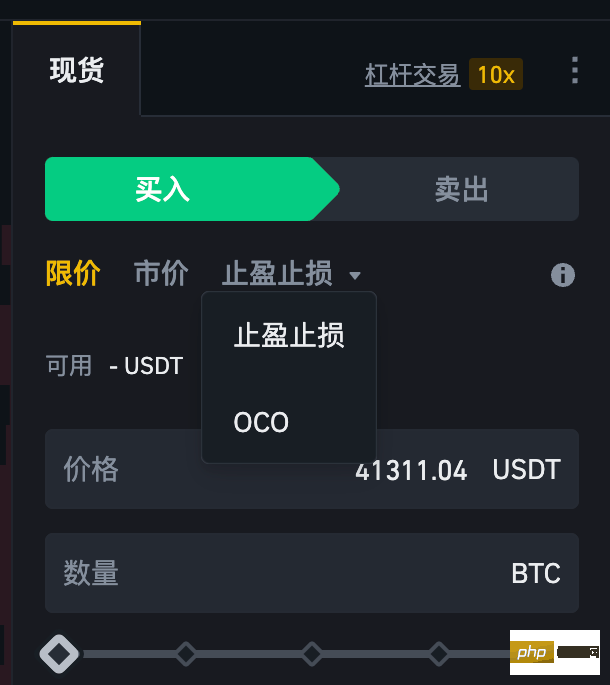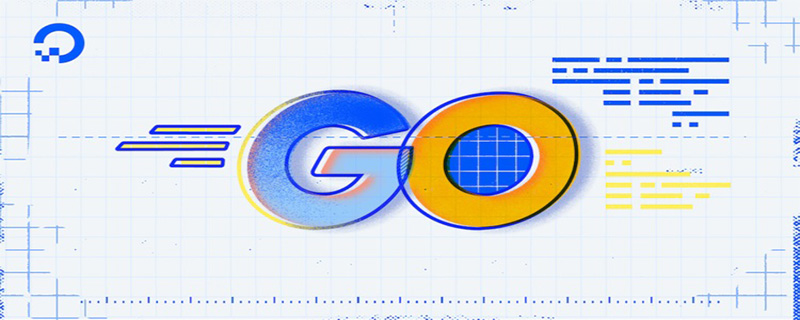php editor Baicao takes you to explore the true face of ERC-404 semi-fungible tokens. This new type of token is getting a lot of attention, but its true innovations have yet to be revealed. In the cryptocurrency market, new projects are emerging one after another, and investors need to carefully assess their value. Whether ERC-404 tokens truly have potential requires a deep understanding of the technology and team strength behind them in order to make informed investment decisions.

ERC-404 was born, PANDORA skyrocketed, and several exchanges such as OKX and Binance launched the ERC-404 section on their Web3 wallets.
Concept
ERC-404 is an experimental Ethereum token standard that aims to combine fungible tokens (such as ERC-20) and non-fungible tokens (such as ERC-721 ) characteristics are combined to create a “semi-fungible token” that is both fungible and non-fungible. This kind of token can exhibit fungible or irreplaceable attributes depending on its usage scenarios or purposes. It allows NFTs to be split and traded like ERC20 tokens, and has the dual attributes of "graphic currency". The picture is the coin again.
Let’s understand ERC-404 through examples. The prices of blue chips such as BAYC and Azuki are prohibitive for ordinary retail investors. Especially blue chips with rare attributes are so expensive that they have no market and are difficult to circulate. With ERC-404, these expensive NFTs can be directly split into tokens and traded directly on DEX without having to wait for buyers to pick up orders. ERC-404 works like splitting a picture into multiple parts, allowing multiple people to jointly own part of the picture.
Innovation point
Pandora (PANDORA) is the first token based on the ERC404 standard. Since its launch, Pandora's value has grown rapidly, and its token price has never reached less than 100% in a short period of time. US$5,000 has soared to more than US$23,000, with a market value of nearly US$200 million. This significant growth highlights the market's interest and potential confidence in this new standard. Nonetheless, as an experimental standard, ERC404 is still in the early stages of adoption and is undergoing rigorous testing to ensure its robustness and reliability.
The innovation of ERC-404 is reflected in the following aspects:
Conditional fungibility: One of ERC-404 tokens The key novelty is their conditional fungibility. This means that these tokens act as fungible assets under certain conditions and behave as non-fungible assets under other circumstances. This flexibility expands the application scenarios of the token, allowing ERC-404 tokens to be more widely used in various blockchain applications.
Enhanced Utility: By introducing semi-fungible tokens, ERC-404 increases the utility of tokens and provides new token opportunities. This includes fractional ownership of NFTs, or dynamic assets that evolve over time. For example, an ERC-404 token could represent fractional ownership of a piece of art, allowing multiple users to share ownership of this precious digital asset.
Improving market liquidity and lowering the barrier to entry: By allowing the sharding of NFTs, ERC-404 tokens help increase the liquidity of the NFT market and lower the barriers faced by potential investors. . This segmentation mechanism makes higher-value digital assets more accessible, thereby attracting a wider audience to participate in the NFT market.
Token Minting and Burning Process: ERC-404 involves the process of token minting and burning, allowing for partial transfer of NFT ownership. When an ERC-404 token is purchased, an NFT associated with it is minted in the buyer’s wallet. Accordingly, when the coins in the wallet are insufficient for a complete token, the corresponding NFT will be destroyed, and when the wallet accumulates enough shares to form a complete token, a new NFT will be automatically generated. This mechanism provides an innovative way to exchange and interact with NFTs, increasing market activity and inclusiveness.
Some people may ask, how does ERC-404 handle NFTs with rare attributes?
For NFTs with rare properties, ERC-404 proposes an innovative way to deal with them. A typical case is the Pandora project. Under this framework, each ERC-404 token is tied to a unique Replicant Box NFT with different rarity colors. When you purchase an ERC-404 token, a box NFT associated with it is randomly generated, with different colors reflecting its rarity. This move not only increases the liquidity of the NFT, but also provides buyers with a new way to increase the rarity of the collection by selling tokens and reminting the NFT.
Specifically, ERC-404 also allows users to evaluate the rarity of the NFT obtained after the initial purchase of tokens, and to "re-extract" the characteristics of the NFT by transferring the tokens to a new wallet, in order to Increase its rarity. This mechanism not only promotes token trading activities on DEX, but also creates additional revenue opportunities for liquidity providers.
However, this mechanism for handling rarity attributes also brings some challenges, such as how to maintain the value of rare NFTs during the reminting process, and how to balance market demand and evaluation for NFTs of different rarities. These considerations need to be addressed and balanced in the further development and practice of the ERC-404 standard.
Limitations
Although ERC-404 offers many innovative application possibilities, it also faces some limitations and challenges.
1. Code risk: The audit agency Beosin conducted a detailed analysis of the design mechanism of ERC-404 and the contract code of ERC-404 v2, indicating that although the v2 contract has added EIP-2612 support , improved minting and destruction logic, but there are still risks: the whitelist function may bring about centralization issues or the possibility of abuse; developers or users may make mistakes when calling the transfer function; there is still a lot of room for improvement in gas optimization; Missing emergency pause function. Therefore, the development team requires formal verification and manual auditing by security experts to ensure that the code has no logical loopholes.
2. Lack of official recognition: ERC-404 is not an officially recognized token standard by Ethereum, which increases the risk because this standard has not been rigorously reviewed by the EIP process. This process provides security, usability, and compatibility for community discussion and review. At the same time, ERC-404’s experimental label is a risk in itself. This status means that the standard is still under development and may undergo significant changes. Projects adopting ERC-404 may face challenges adapting to these changes, leading to instability or compatibility issues.
3. Potential exploitation risk: A developer named "quit" proposed that if an ERC-404 standard NFT is put into a loan that does not appropriately adapt to its unique requirements In the agreement, there may be a risk of NFT being stolen. This note highlights the need for rigorous configuration and compatibility checks to prevent such vulnerabilities when integrating experimental standards into the broader ecosystem. At the same time, because the ERC-404 standard is informal and eager to go into production, there may be a wave of non-innovative projects, rug pulls, and other malicious behaviors that use ERC-404 as a gimmick.
4. Integration Challenges: Integrating the characteristics of fungible and non-fungible tokens in ERC-404 may cause difficulties for platforms and protocols built on existing standards. These barriers may limit the efficiency and effectiveness of projects using ERC-404.
Extensions based on ERC-404
1. PORTAL404
PORTAL404 is a project based on the ERC-404 v2 standard and has launched a series of The portal with rich interactive interface improves user experience and simplifies the transaction process. Although ERC-404 v2 introduces features such as ultra-high liquidity, sharding, and resets, this rapidly evolving technology also brings new complexities and risks, such as the management of multiple dApps and multiple interfaces, and Uncertainty about which NFT will be destroyed or transferred. In order to solve these challenges, PORTAL404 introduced the ERC-5169 standard - calling the corresponding token front end through the token contract, that is, providing a token interface to support ERC-404 token holders to view each token on the same interface Complete data for associated NFTs, ERC20s and ERC721s, including balances, owners, market prices, contracts, etc., and allows interaction with external contracts, such as increasing leverage via Wasabi Protocol, conducting trade analysis using Candlestick or monitoring trading pairs via Floor Protocol.
Overall, the PORTAL404 project provides NFT and token holders with a higher level of control and security by combining ERC-404 and ERC-5169 standards.
2. DN-404
DN-404 is a supplement and improvement to the ERC-404 standard, launched by developers cygaar and quit, aiming to solve The rising fees on the Ethereum network caused by ERC-404. DN-404 is called "Divisible NFT-404". Unlike ERC-404, which attempts to merge NFT and token functions in a single contract, DN-404 uses two separate contracts: a standard ERC-20 token and a mirror. ERC-721 NFT. Developers believe this decoupled approach mitigates potential security risks, adheres to established standards, and ultimately simplifies the process. However, the code for DN-404 has not been audited, so there are inherent risks in its use.
The DN404 standard was proposed to solve the efficiency problem of ERC-404. This newly proposed "divisible NFT" standard is designed to allow NFT holders to trade the split parts of the NFT with others. Developer cygaar explained on social media that their ultimate goal is to create an NFT standard with native split functionality.
3. Smart Layer
We have previously conducted a detailed analysis and introduction of Smart Layer's TokenScrip and ERC-5169: TokenScript is a programming interface specially designed for tokenization proposed by Smart Token Labs in 2019. This interface not only helps users access all functions of the token, but also allows the creation of more advanced, complex and flexible "user token" interactions. In order to enable tokens to interact with various services and applications in the Web3 ecosystem, Smart Token Labs proposed the Ethereum standard ERC-5169 in May 2022 (which has become Final status). This standard introduces the concept of executable scripts, allowing tokens to carry their own logic and behavior and have stronger interactive capabilities. TokenScripts can be embedded into tokens according to the ERC-5169 standard, allowing tokens to exhibit dynamic behavior when interacting with various services and platforms.
Smart Layer recently launched an upgraded ERC-404 application. Based on ERC-404 V2, ERC5169 and TokenScript are added to ERC404 tokens as the token front end to help users more securely and conveniently Operating ERC404 tokens makes transactions more secure and frictionless, and even further amplifies liquidity. Crypto researcher Haotian analyzed: "As for Smart Layer, it actually has nothing to do with ERC-404. It's just that ERC-404 aims to make tokens have the basic functions corresponding to NFT images, while Smart Layer is a set of ERC-5169 that integrates And the TokenScript standard is essentially to achieve the programmable execution properties of FT tokens."
Summary
The ERC-404 standard brings new possibilities for token applications and liquidity by combining the characteristics of fungible and non-fungible tokens. The market's interest and potential confidence in this new standard has been significantly demonstrated with the launch and implementation of tokens such as PANDORA, demonstrating its potential to increase NFT market liquidity and lower barriers to entry. However, as an experimental standard, ERC-404 also faces many challenges and limitations, including code risks, lack of official recognition, and potential exploitation risks, which require high attention and caution from developers, investors, and users. .
With the continuous development of technology and the gradual maturity of the market, we can look forward to ERC-404 and its derivative projects such as PORTAL404 and Smart Layer, etc., to continue to explore and expand the boundaries of tokenization. These innovations not only provide NFT and token holders with richer interactive experiences and investment opportunities, but also bring new vitality and development potential to the entire blockchain ecosystem. In the future, as more projects adopt and optimize this standard, we may witness a major change in the field of blockchain tokenization, creating more value and opportunities for users and developers.
The above is the detailed content of ERC-404 semi-fungible tokens, are they real innovations or gimmicks?. For more information, please follow other related articles on the PHP Chinese website!
 区块链只能用go语言吗Dec 27, 2022 pm 05:25 PM
区块链只能用go语言吗Dec 27, 2022 pm 05:25 PM不是。区块链是一种编程思想,原则上使用任何一种编程语言都可以实现,比如Solidity、C++、C#、Java、javascript、Go都可以实现区块链的开发;区块链技术涉及的面很广,而编程语言只是一种手段,把设计理念用代码呈现出来,做成产品服务用户。
 什么是OCO订单?Apr 25, 2023 am 11:26 AM
什么是OCO订单?Apr 25, 2023 am 11:26 AM二选一订单(OneCancelstheOther,简称OCO)可让您同时下达两个订单。它结合了限价单和限价止损单,但只能执行其中一个。换句话说,只要其中的限价单被部分或全部成交、止盈止损单被触发,另一个订单将自动取消。请注意,取消其中一个订单也会同时取消另一个订单。在币安交易平台进行交易时,您可以将二选一订单作为交易自动化的基本形式。这个功能可让您选择同时下达两个限价单,从而有助于止盈和最大程度减少潜在损失。如何使用二选一订单?登录您的币安帐户之后,请前往基本交易界面,找到下图所示的交易区域。点
 go语言能开发区块链吗Jan 03, 2023 pm 01:41 PM
go语言能开发区块链吗Jan 03, 2023 pm 01:41 PM可以开发。区块链是一种编程思想,原则上使用任何一种编程语言都可以实现,比如go语言、Solidity、C++、C#、Java、javascript都可以实现区块链的开发。Go语言是为了解决分布式计算,而区块链是典型的分布式数据存储系统,因此go语言能开发区块链。且Go易学易用,能很好的满足区块链行开发需要的“执行效率高、高并发、跨平台,网络开发要求高”等特点。
 为什么用go语言写区块链Mar 04, 2021 pm 03:42 PM
为什么用go语言写区块链Mar 04, 2021 pm 03:42 PM原因:1、Go语言具有部署简单、性能优秀、并行执行性能好、良好语言设计、内置大量库、团队牛逼等优势。2、以太坊和超级账本都选择使用Go作为开发语言;这两大超级区块链的影响力很大,不仅在生态中占据了大的坑位,事实上还隐性的制定了区块链的标准。
 深入学习区块链的Go语言开发框架Jun 04, 2023 pm 08:01 PM
深入学习区块链的Go语言开发框架Jun 04, 2023 pm 08:01 PM区块链技术的出现,使得数字货币的应用成为可能,也在许多领域得到了广泛应用。随着区块链技术领域的扩大,开发人员对于更好的应用程序编写方式的需求也高涨起来。于是,一个叫做Go语言(简称Golang)的编程语言悄悄兴起,成为了区块链开发人员的最爱。Go语言是谷歌公司开发的一种系统级编程语言,自诞生以来,一直着重强调程序设计的简捷和高效。Go语言的优点包括:静态类型
 Java 中的区块链和加密货币技术Jun 09, 2023 am 09:56 AM
Java 中的区块链和加密货币技术Jun 09, 2023 am 09:56 AMJava是一种广泛使用的编程语言,它被许多公司和组织用作开发各种应用程序的工具。最近几年来,区块链和加密货币技术在全球范围内引起了大量的关注。Java的灵活性和多功能性使得它成为开发区块链和加密货币应用程序的优秀选择。区块链技术是一种安全的、去中心化的数据库,它可以存储和共享交易记录,而无需任何中央机构的干涉。Java提供了许多区块链开发框架,例如H
 打造高效的区块链技术开发环境(使用Go语言)Jun 05, 2023 am 08:21 AM
打造高效的区块链技术开发环境(使用Go语言)Jun 05, 2023 am 08:21 AM随着区块链技术的发展和应用越来越广泛,有越来越多的人开始参与到区块链技术的开发中来。而要想打造高效的区块链技术开发环境,选择合适的开发语言和工具是非常重要的。Go语言正是一个很好的选择,因为它的性能很高,同时还有很多优秀的开源工具和库,能够大大提高开发效率。下面就来介绍一下如何打造高效的区块链技术开发环境,使用Go语言进行开发。一、选择Go语言在选择开发语言
 如何利用Go语言实现全球唯一的区块链身份标识Jun 04, 2023 pm 03:51 PM
如何利用Go语言实现全球唯一的区块链身份标识Jun 04, 2023 pm 03:51 PM区块链是一种去中心化的分布式账本技术,随着其应用领域的不断扩展,如何保障区块链参与者的身份安全问题也逐渐成为热门话题。本文将介绍如何利用Go语言实现全球唯一的区块链身份标识。一、为什么需要区块链身份标识在现有的互联网世界中,身份验证是一个非常重要的问题。通过用户名和密码等方式,用户可以登录到我门的网站上,从而使用我们的服务。但是,在互联网上,身份验证存在着

Hot AI Tools

Undresser.AI Undress
AI-powered app for creating realistic nude photos

AI Clothes Remover
Online AI tool for removing clothes from photos.

Undress AI Tool
Undress images for free

Clothoff.io
AI clothes remover

AI Hentai Generator
Generate AI Hentai for free.

Hot Article

Hot Tools

WebStorm Mac version
Useful JavaScript development tools

SAP NetWeaver Server Adapter for Eclipse
Integrate Eclipse with SAP NetWeaver application server.

MantisBT
Mantis is an easy-to-deploy web-based defect tracking tool designed to aid in product defect tracking. It requires PHP, MySQL and a web server. Check out our demo and hosting services.

SublimeText3 Chinese version
Chinese version, very easy to use

Dreamweaver Mac version
Visual web development tools






